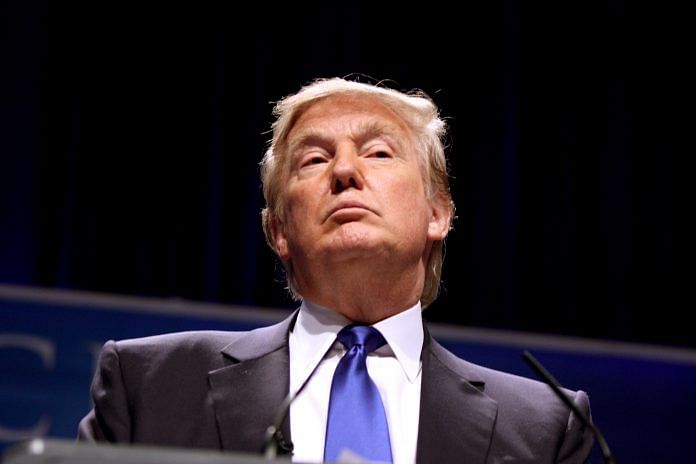The proposed salary cap will hit Indian IT companies that pay H-1B holders $69,000 to $82,000, not the likes of Amazon and Google who pay over $100,000.
The new twist by way of ‘leaked information’ in Donald Trump’s ‘Buy American, Hire American’ initiative has got New Delhi finessing a line of attack on why should there be country caps on green cards, especially when 80-90 per cent of H-1B visas are issued to Indians.
This is a direct response to a proposal under consideration that the US will send back those H-1B holders who are on extension because their green card applications are pending with the US Administration.
The queue is long for Indians – up to 12 years at times, because there are just so many applications. An H-1B visa can last for six years at most, beyond which the only exception is the pending green card application.
India’s line in its official conversations with the US is clear: Don’t be discriminatory, and find a solution that is mutually beneficial to both economies. By that logic, country caps on green cards are potentially discriminatory.
But the problem is larger, one which goes beyond the point-by-point rebuttal between New Delhi and Washington. This is about a changing economic dynamic, where Indian IT professionals will have to move up the value chain to make themselves relevant to Trump’s America.
The truth is that even Barack Obama had felt this pressure. So, it’s important to understand the fundamentals a little better.
The fundamentals
Measures like these are being contemplated by the Department of Homeland Security (DHS). The DHS is essentially looking at ways to reinterpret the law passed in 2000 that created the H-1B category for the US to bring in skilled talent where necessary. In the Y2K period, and even after that, the numbers had gone up to 1.92 lakh per year.
The cap now stands at 65,000, plus 20,000 for those who do their post graduate in STEM courses in the US.
A liberal interpretation of the law also allowed for spouses to find work. This too is now under question.
Then, came the case of IT companies, where H-1B holders account for 50 per cent of the relevant staff. These were mostly Indian companies, or companies (typically US-owned) that employed more than 20 per cent H-1B holders.
Trump’s purpose seems to be to make an allowance for the latter and not the Indian companies. But how?
The Protect and Grow American Jobs Act under consideration by the US Congress suggests increasing the salary threshold requirement for H-1B visa from $60,000 to $100,000.
A quick survey by Indian authorities revealed that the average annual salary for H-1B holders in top four Indian IT companies in the US was in the vicinity of $69,000 to $82,000, while US digital majors like Amazon and Google paid well beyond $100,000.
So, from New Delhi’s standpoint, the Protect and Grow Americans Jobs Act is potentially discriminatory to Indian IT companies. However, it serves Washington’s purpose of limiting H-1B to highly-skilled professionals.
Future prospects
This is why the future prospects of Indian IT professionals in the US depends on their ability to upskill and value add.
While India may be able to put up a strong diplomatic fight on grounds that these changes appear discriminatory, the fact is chances of making any headway lie in the economic, not the political sphere.
The H-1B visa should be seen as a mutually beneficial economic initiative, and not a political right on either side. And here, the point to assess is the nature of skill requirements in the US, its availability, and where Indian professionals can still fill the gap.
By all accounts, the H-1B boom is behind us, but there are high-end skills which will require Indian IT talent. In other words, salary caps will get higher, making it tougher for Indian IT companies, but not necessarily outlying the highly-skilled Indian IT professional.






